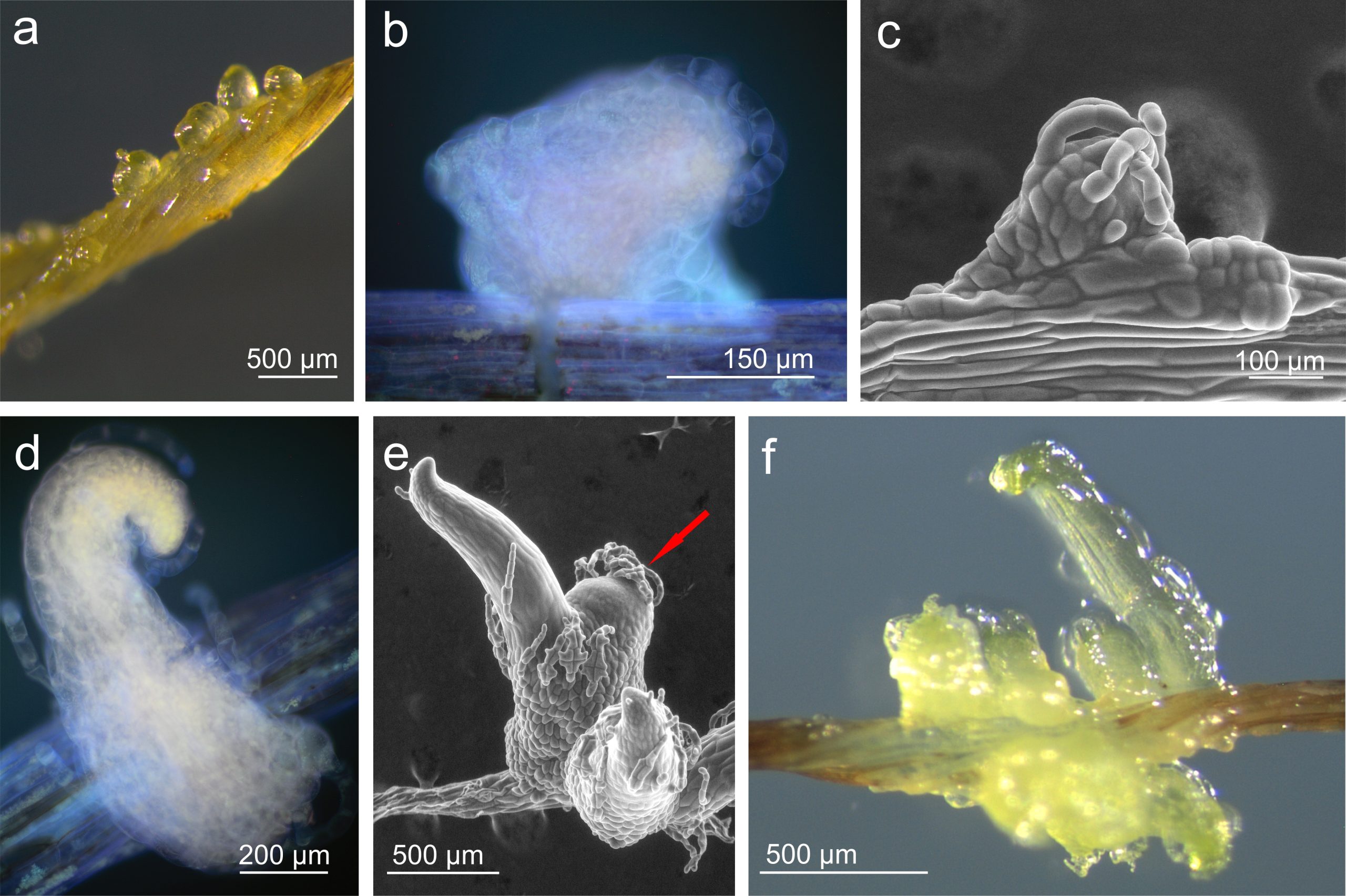We have developed a simple and effective method for in vitro multiplication and cryopreservation of wedge-shaped anthracnose (Asplenium cuneifolium Viz.), an endangered species of serpentine fern
At the end of May 2023, the journal Plant Cell, Tissue and Organ Culture (PCTOC) published a scientific paper by the Plant Biotechnology and Micropropropagation Team describing a complete procedure for in vitro culture multiplication and liquid nitrogen storage of one of the country's rarest ferns, the wedge-shaped anthracnose (Asplenium cuneifolium Viz.), found only on serpentinite rocks of Lower Silesia. Our biotechnologists have shown that the spores of the A. cuneifolium introduced into liquid nitrogen do not lose their viability, and after disinfection they can be successfully seeded into 1/2MS medium and give rise to gametophyte culture. Also, gametophytes survive cryopreservation in 100% by using appropriate preculture and optimizing the encapsulation-dehydration technique. Running the culture of gametophytes on a medium devoid of ammonium ions and with a fourfold reduction in the concentration of other macro- and micronutrients, on the other hand, makes it possible to quickly obtain sporophyte generation. The multiplication of sporophytes, in turn, can be intensified by using the phenomenon of somatic embryogenesis, which our scientists were the first in the world to describe earlier in tree ferns Cyathea delgadii Sternb.
The combination of in vitro cultures with cryopreservation of spores and gametophytes will allow long-term preservation of the endangered species of wedge-shaped anthracnose under conditions ex situ That is, outside the place of natural occurrence.
Tomiczak, K.; Makowski, D.; Sliwinska, E.; Mikula, A. The development of an in vitro propagation and conservation system for the endangered serpentine fern Asplenium cuneifolium Viv. Plant Cell Tissue Organ Cult. 2023, 154, 161-175; https://doi.org/10.1007/s11240-023-02524-4
post
post
2023-07-07 11:02:32


